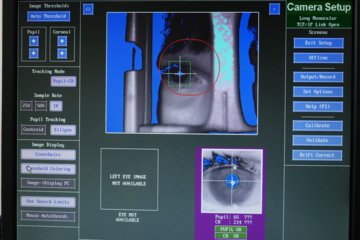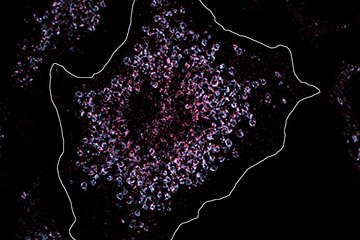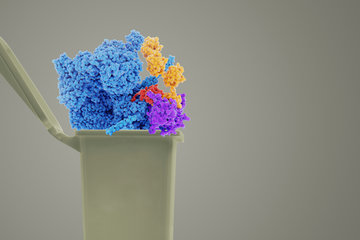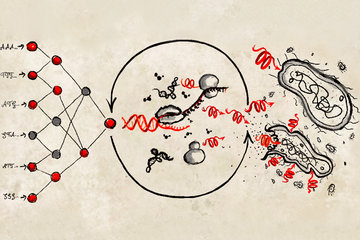Transformation of adult stem cells causes tumours
Transcription factors of the Dux family in active muscle stem cells can trigger muscle tumour formation
From which cells do tumours originate? This question, as well as the question how a healthy cell suddenly transforms and becomes a tumour, were the subject of research by scientists from the Max Planck Institute for Heart and Lung Research in Bad Nauheim. Using the example of skeletal muscle tumours in mice, they demonstrated that local stem cells which normally contribute to tissue regeneration, can be responsible for tumour formation under certain circumstances. For this to happen, the stem cells must be actively proliferating as is the case when an injured muscle regenerates. Transcription factors from the Dux family often play a central role during tumour formation. The scientists hope to have identified a mechanism in Dux-factor dependent tumor formation that might be targeted for specific tumours in future.
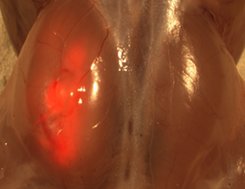
Tumours form when individual cells transform and start to multiply uncontrollably. For many types of cancer, it is unclear what the cellular origin of these cells might be. However, scientists suspect that, in the case of some tumours, so-called carcinogenic stem cells can develop from healthy stem cells and form the starting point for tumours. Scientists from the Department “Cardiac Development and Remodelling” at the Max Planck Institute for Heart and Lung Research in Bad Nauheim have now investigated if and how this happens.
The Max Planck researchers’ study is based on the observation that many tumours form primarily in tissues in which adult stem cells show a high rate of cell division. This is often the case in tissues which regenerate constantly, creating renewed tissue from activated stem cells. Skeletal muscles have regenerative stem cells, but these are normally only active if damaged muscle fibres need to be replaced. The study shows that a muscle tumour called rhabdomyosarcoma appears to be caused by activated muscle stem cells that are transformed during the regeneration process.
The researchers from Bad Nauheim used a genetically modified mouse species called mdx for their investigation. “One special feature of mdx mice is that their skeletal muscles are continuously undergoing a regenerative process. This means that new activated muscle stem cells are continuously produced from local stem cells,” Johnny Kim states.
The researchers further changed these mice by adding a molecular switch to a so called tumour suppressor gene known as p53. This enabled Kim’s working group to intentionally switch off the p53 gene in the muscle stem cells. “We noticed that tumours developed in the muscles of the mdx mice after we switched off p53. This however did not happen in the control animals containing healthy muscles, i.e. without regeneration activity,” Kim points out.
To examine how this process is regulated at a genetic level, the researchers in Bad Nauheim purified the tumour cells and investigated the genome specifically in these cells. They discovered that the copy number of genes which otherwise play a role during embryonal development were amplified in the tumor cells. “This observation showed that certain processes occurring in embryos are similar to those that occur during tumour formation” as Jens Preussner, one of the authors of the study, explains.
A low number Dux-factor molecules could be the reason why this sometimes happens. “In the initial phase of embryonal development, these transcription factors ensure that specific embryonal genes are activated, which then enables the cells to take on different roles. This process is called plasticity, it is highly regulated and is then normally shut off forever,” Kim says. However, in the case of rhabdomyosarcoma, Dux transcription factors appear to switch on embryonal genes again. This turns healthy cells into tumour cells. “It appears that this process not only applies to rhabdomyosarcoma, but could also play a part in more than 30 other types of human cancer,” Preussner says.
The researchers from Bad Nauheim are hoping that this study might provide a starting point for the later development of anti-tumour treatments. In the experiment, tumour cells stop growing after Dux was blocked. “Our study shows that tumour cell formation is a very complicated process and that it varies from one tumour to the next. Potential treatment would therefore have to be tailored to every patient,” Kim says.




